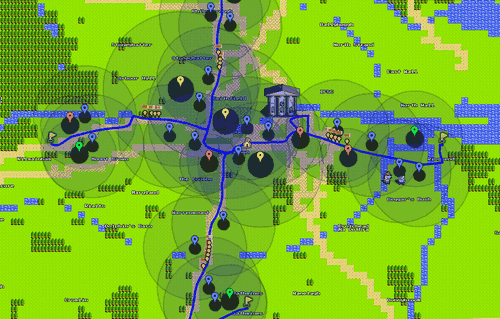
The "New Asthetic" is a term coined by James Bridle, and collected on Tumblr, further shaped by Matt Jones' comments on "sensor-vernacular" and the "robot-readable world." It is an investigation in the ways that imagry for and from machines has become a popular visual culture of its own, even shaping behaviors (as Tom Armitage asks, "How long before, rather than waving, or shaking hands, we greet each other with a calibration pose"?) If that is still confusing, perhaps Bruce Sterling might better explain the "New Aesthetic."
In "An Essay on the New Aesthetic," Sterling begins discussing the SXSW panel on the New Aesthetic, which included Bridle and Rhizome editor Joanne McNeil, in addition to Ben Terrett, Aaron Straup Cope, and Russell Davies. From there he explains, in almost a manifesto of sorts, just where these influences came from and where it is going:
Look at those images objectively. Scarcely one of the real things in there would have made any sense to anyone in 1982, or even in 1992. People of those times would not have known what they were seeing with those New Aesthetic images. It’s the news, and it’s the truth.
Next, the New Aesthetic is culturally agnostic. Most anybody with a net connection ought to be able to see the New Aesthetic transpiring in real time. It is British in origin (more specifically, it’s part and parcel of a region of London seething with creative atelier “tech houses”). However, it exists wherever there is satellite surveillance, locative mapping, smartphone photos, wifi coverage and Photoshop.
The New Aesthetic is comprehensible. It’s easier to perceive than, for instance, the “surrealism” of a fur-covered teacup. Your Mom could get it. It’s funny. It’s pop. It’s transgressive and punk. Parts of it are cute.
It’s also deep. If you want to get into arcane matters such as interaction design, computational aesthetics, covert surveillance, military tech, there’s a lot of room for that activity in the New Aesthetic. The New Aesthetic carries a severe, involved air of Pynchonian erudition.
It’s contemporary. It’s temporal rather than atemporal. Atemporality is all about cerebral, postulated, time-refuting design-fictions. Atemporality is for Zenlike gray-eminence historian-futurist types. The New Aesthetic is very hands-on, immediate, grainy and evidence-based. Its core is a catalogue of visible glitches in the here-and-now, for the here and for the now.
It requires close attention. If you want to engage with the New Aesthetic, then you must become involved with some contemporary, fast-moving technical phenomena. The New Aesthetic is inherently modish because it is ferociously attached to modish, passing objects and services that have short shelf-lives. There is no steampunk New Aesthetic and no remote-future New Aesthetic. The New Aesthetic has no hyphen-post, hyphen-neo or hyphen-retro. They don’t go there, because that’s not what they want....